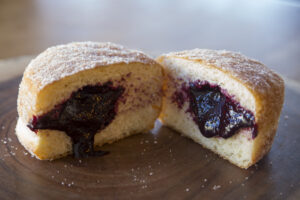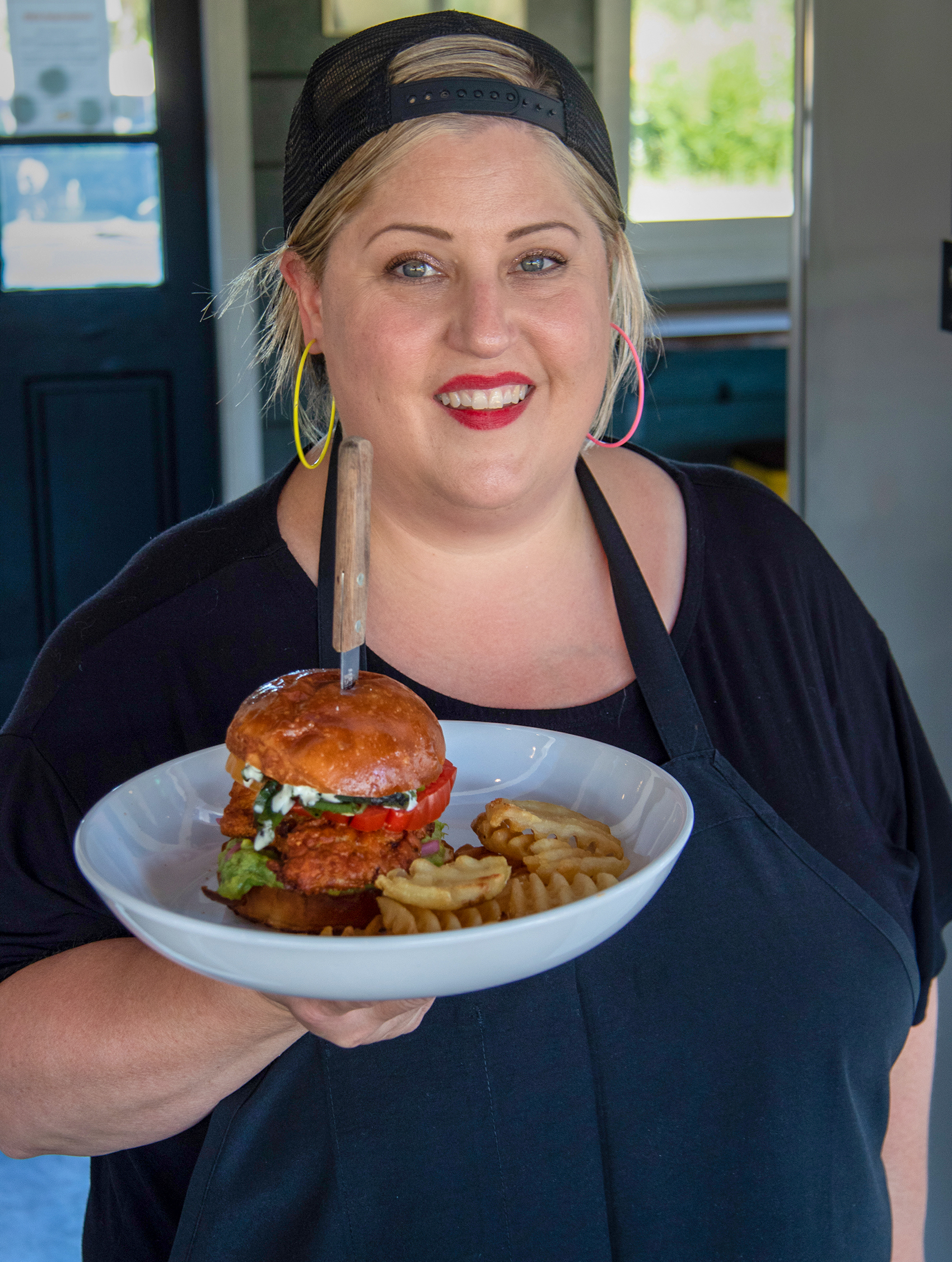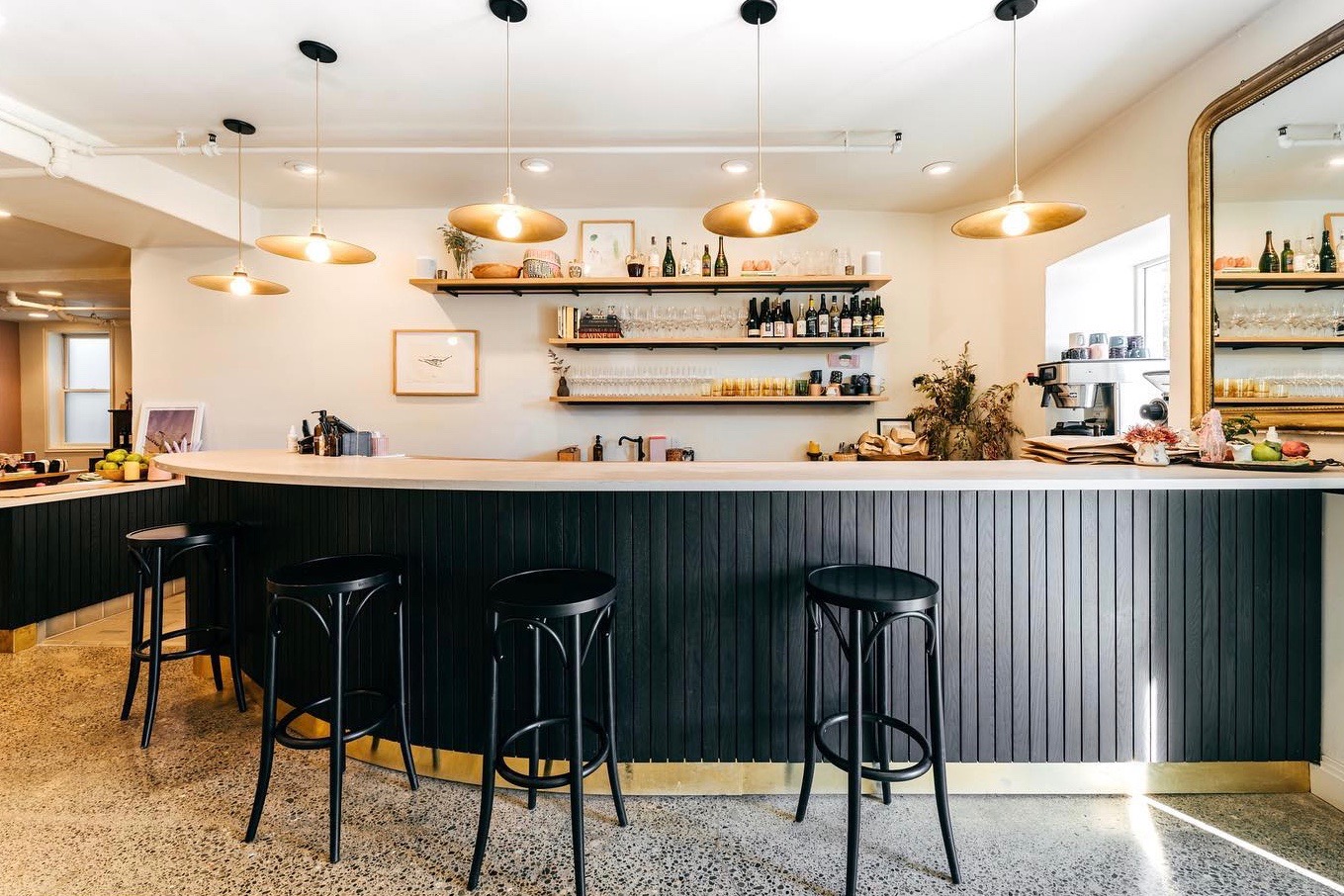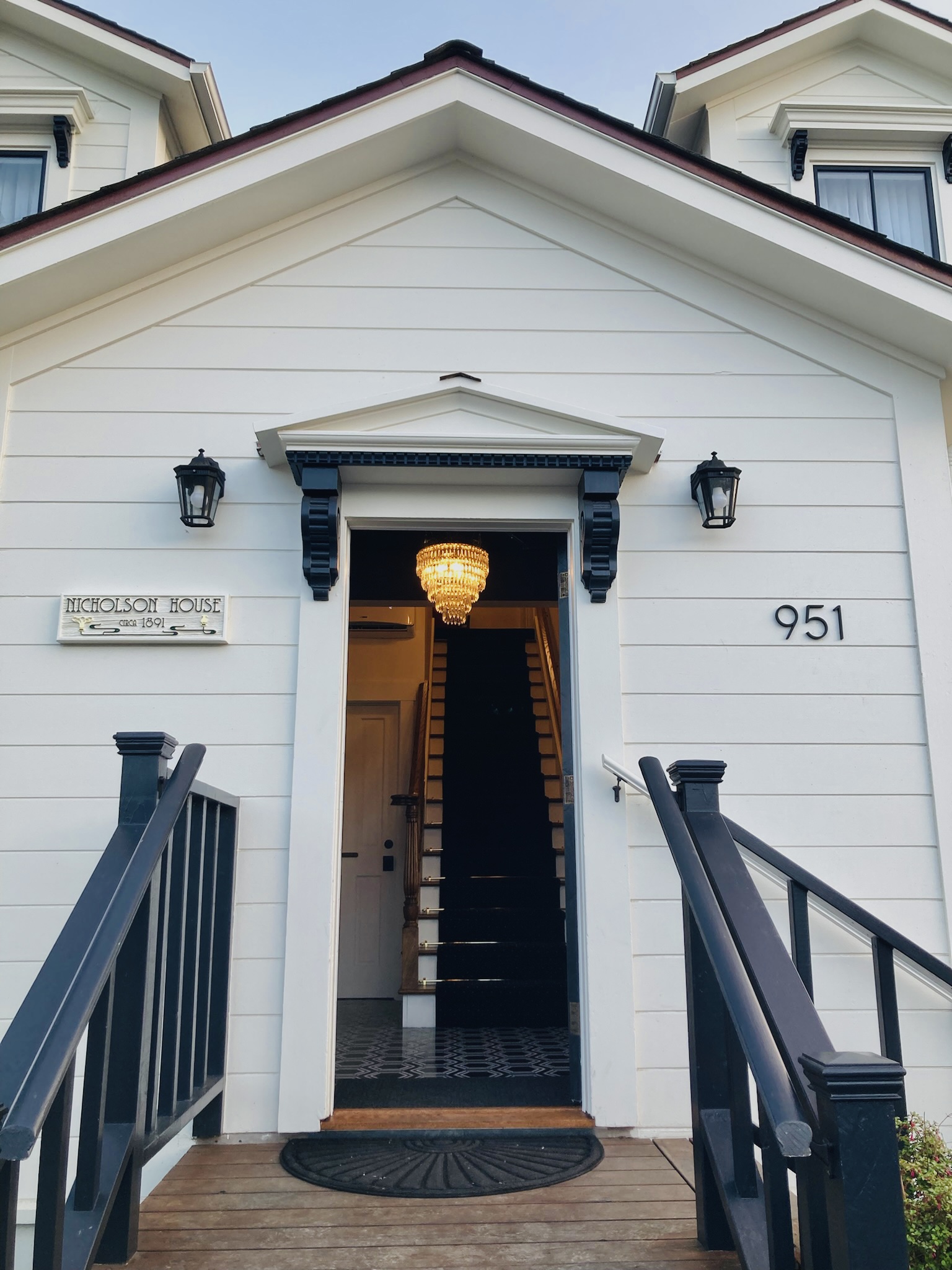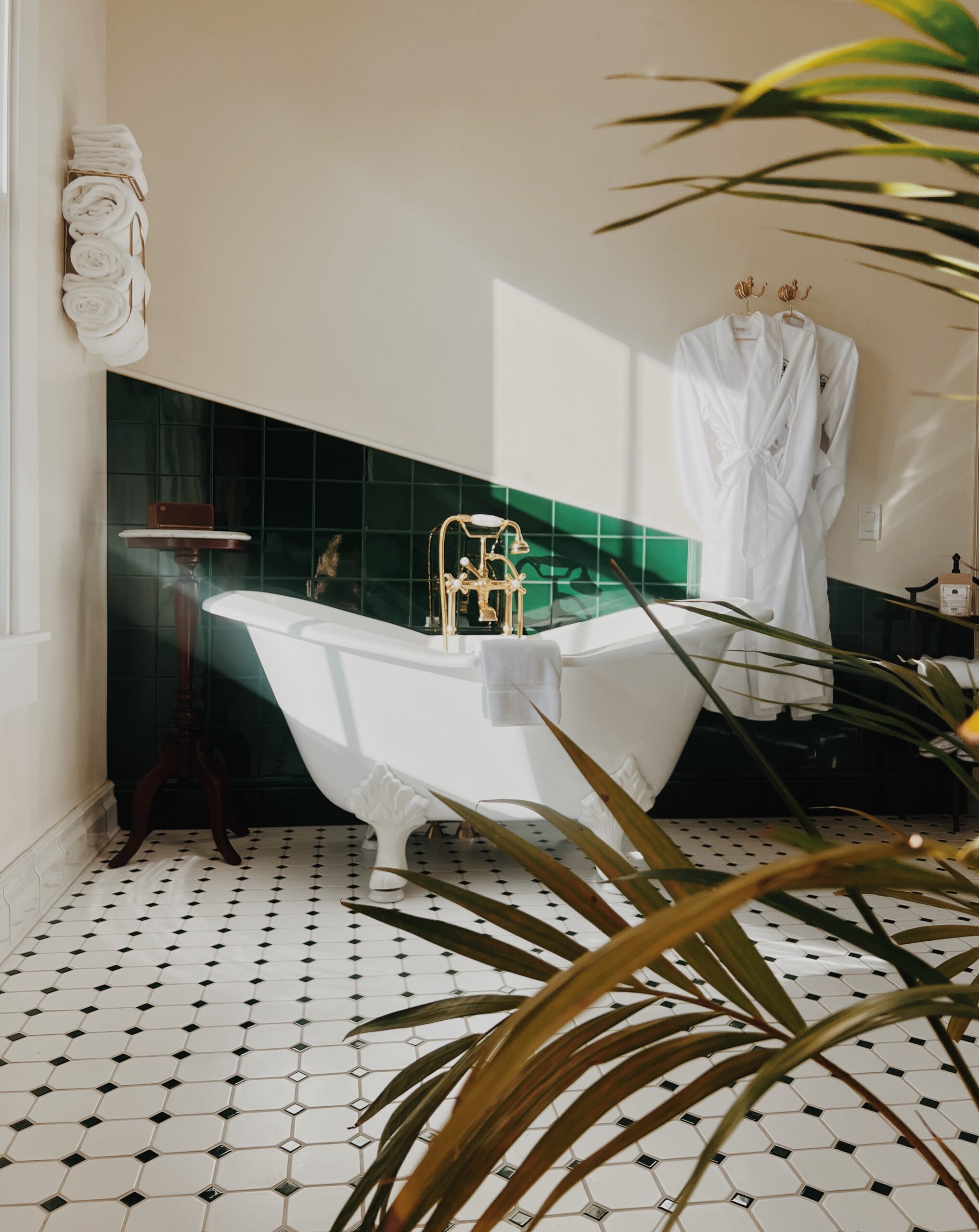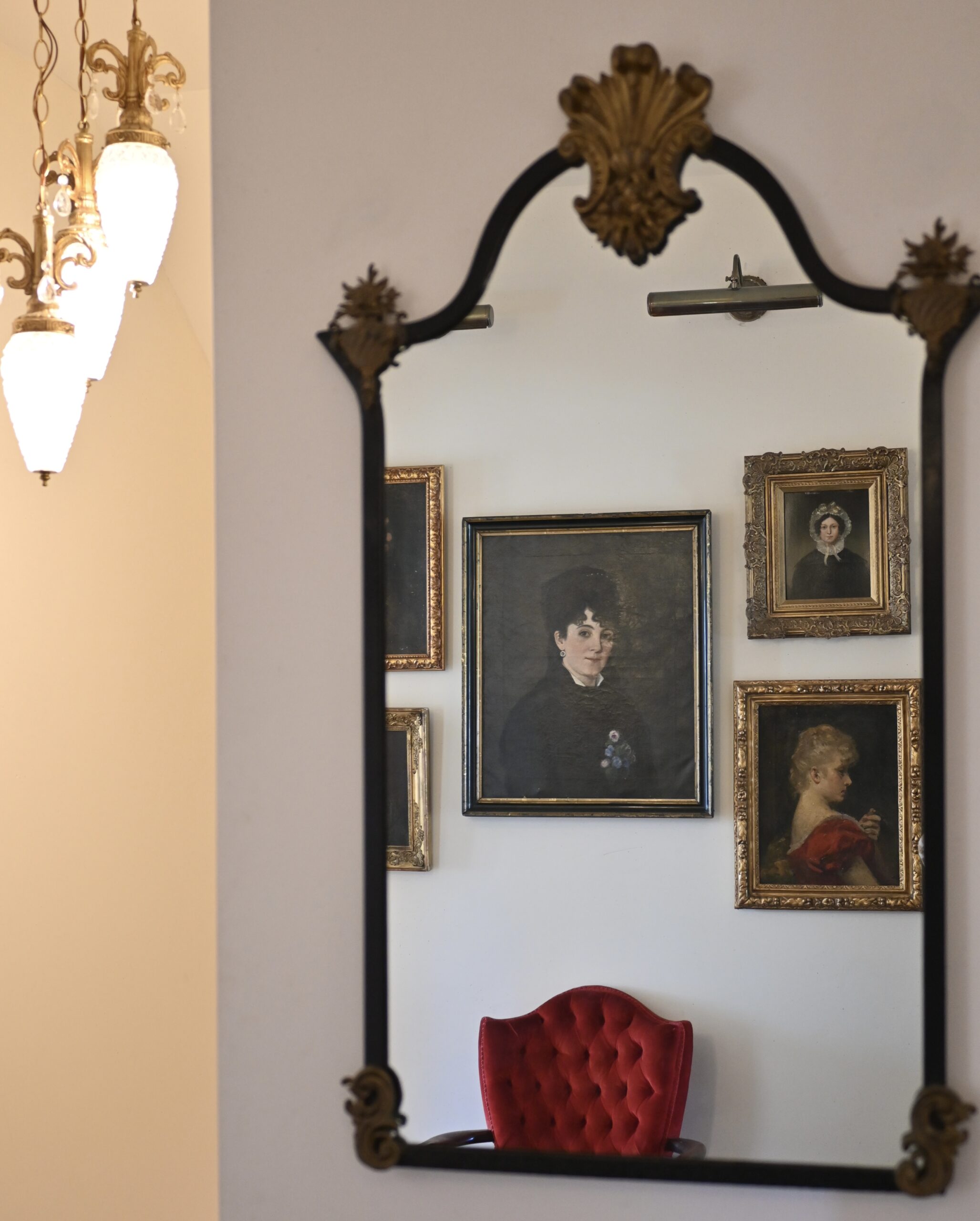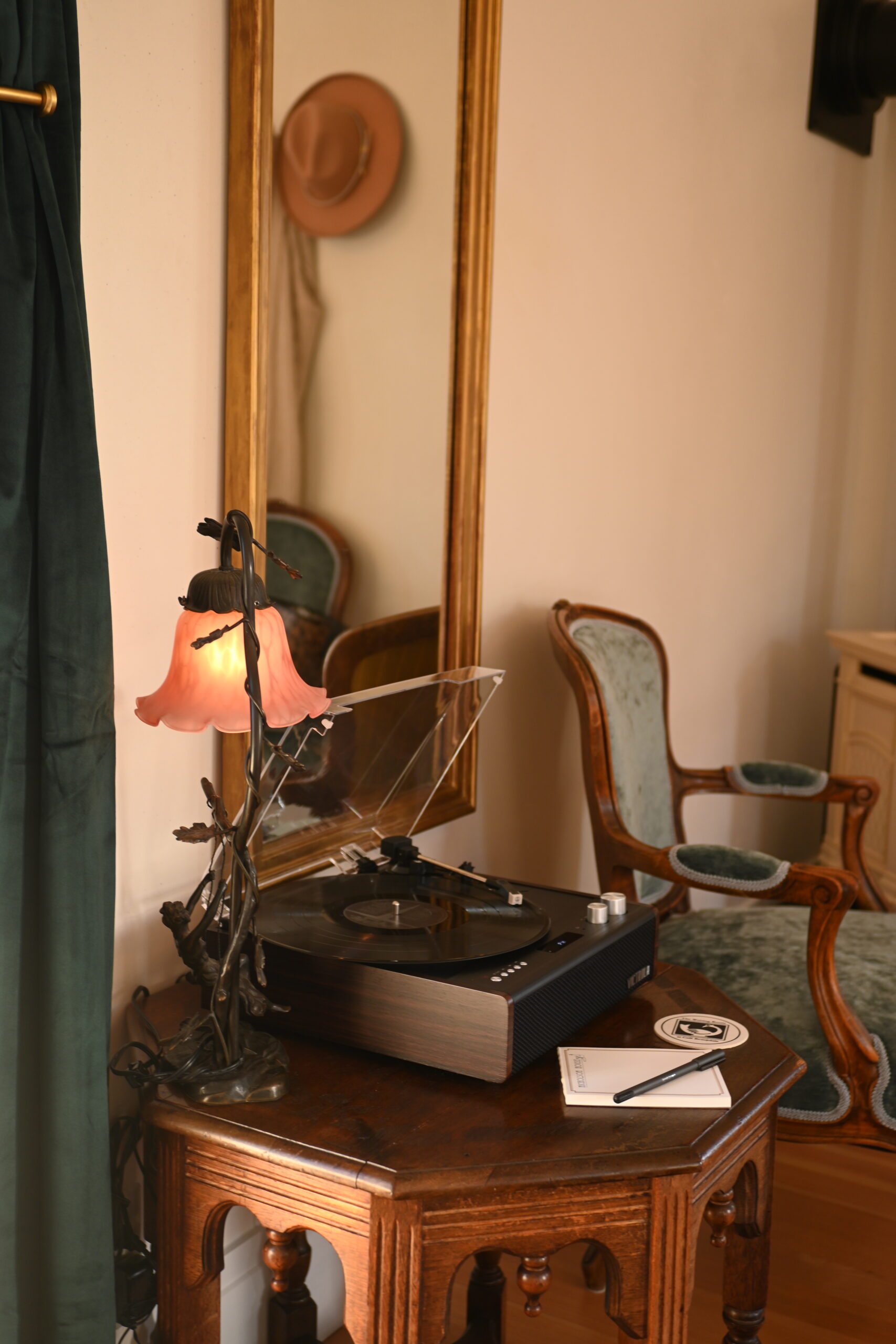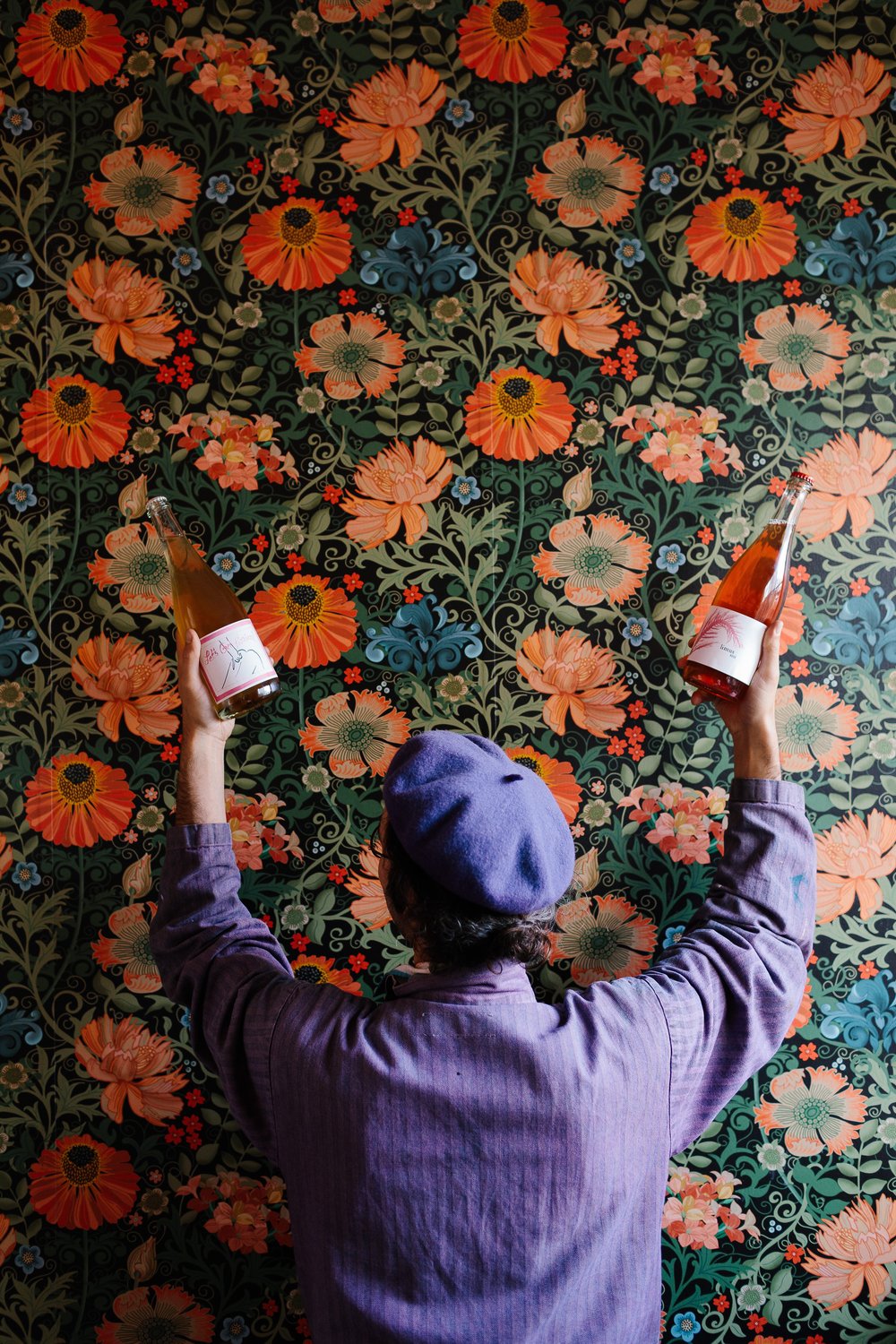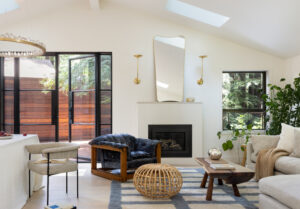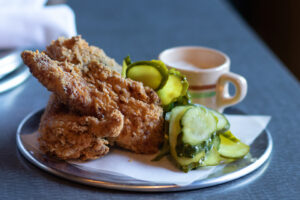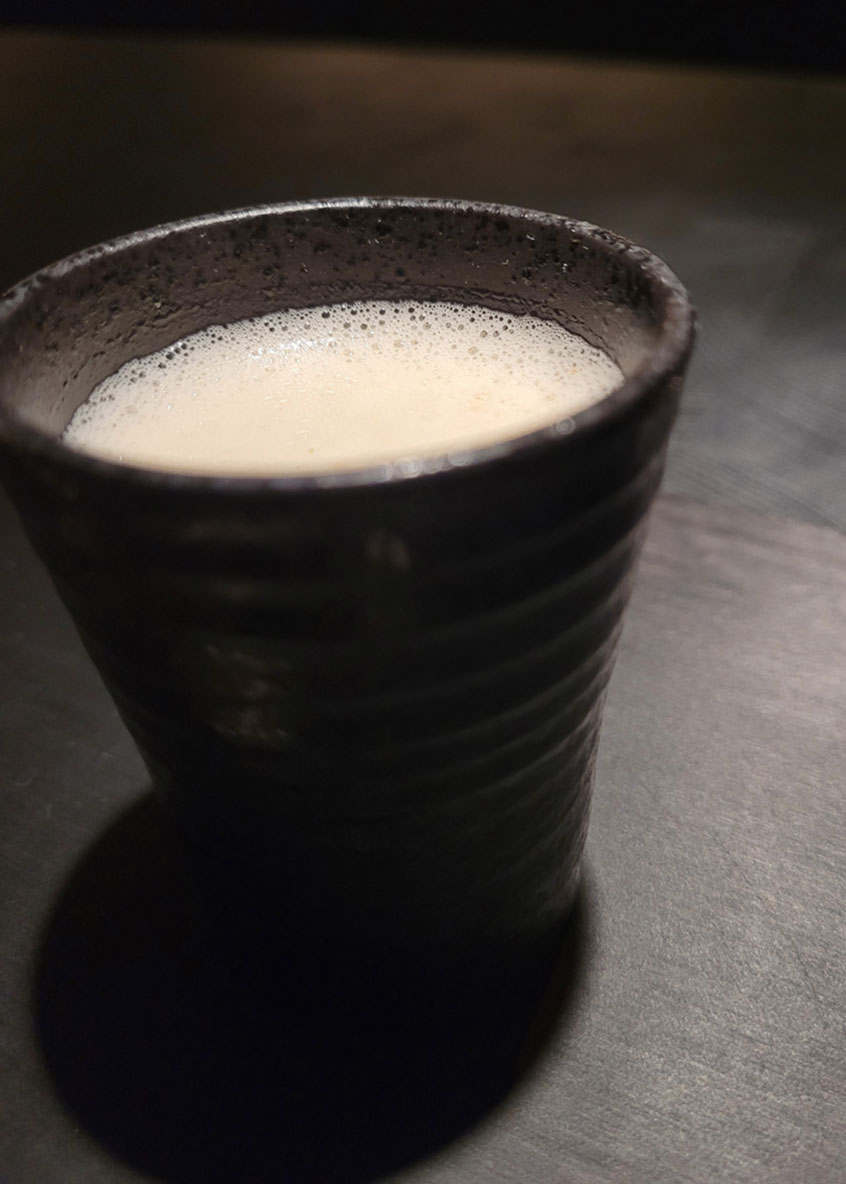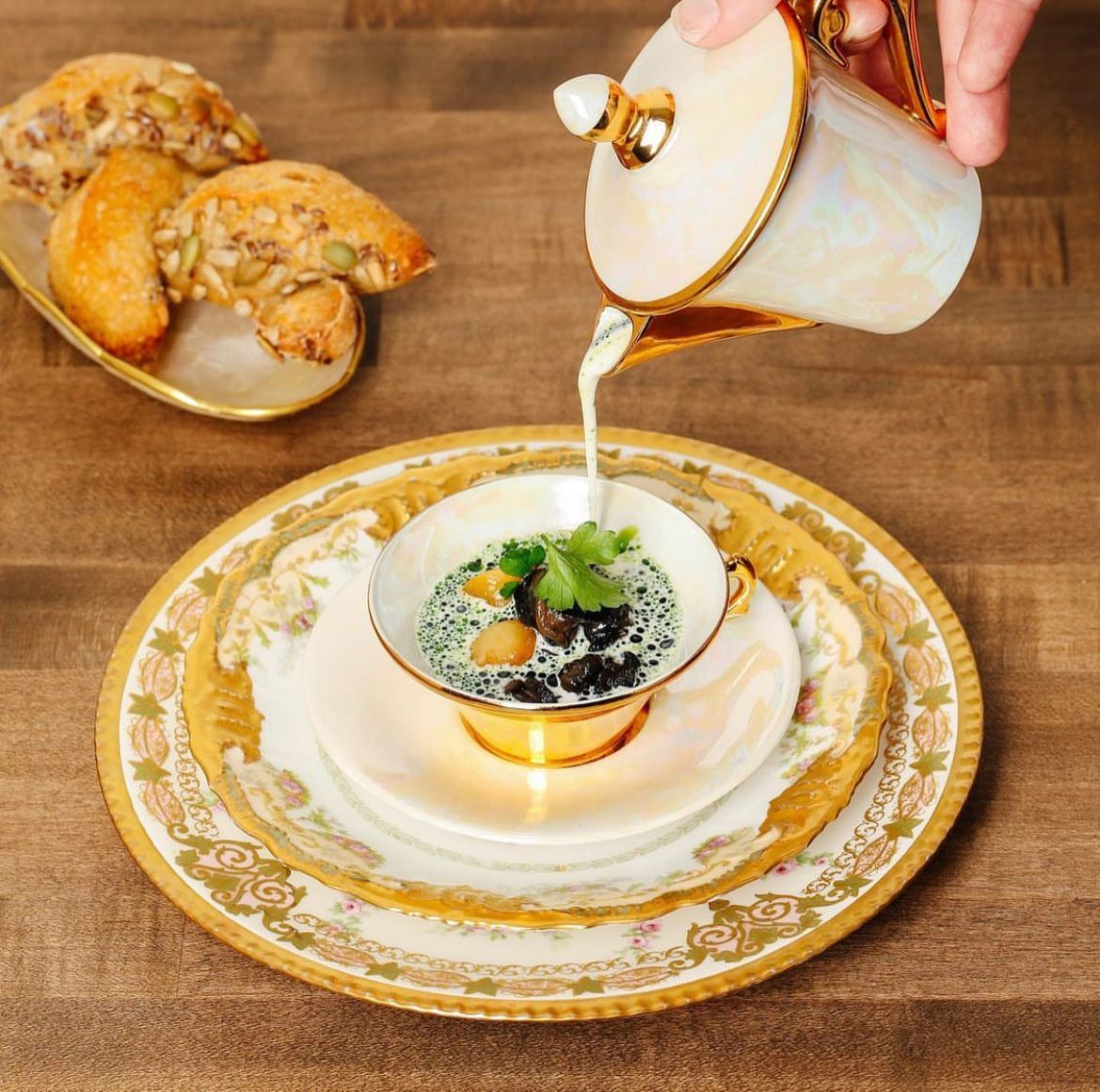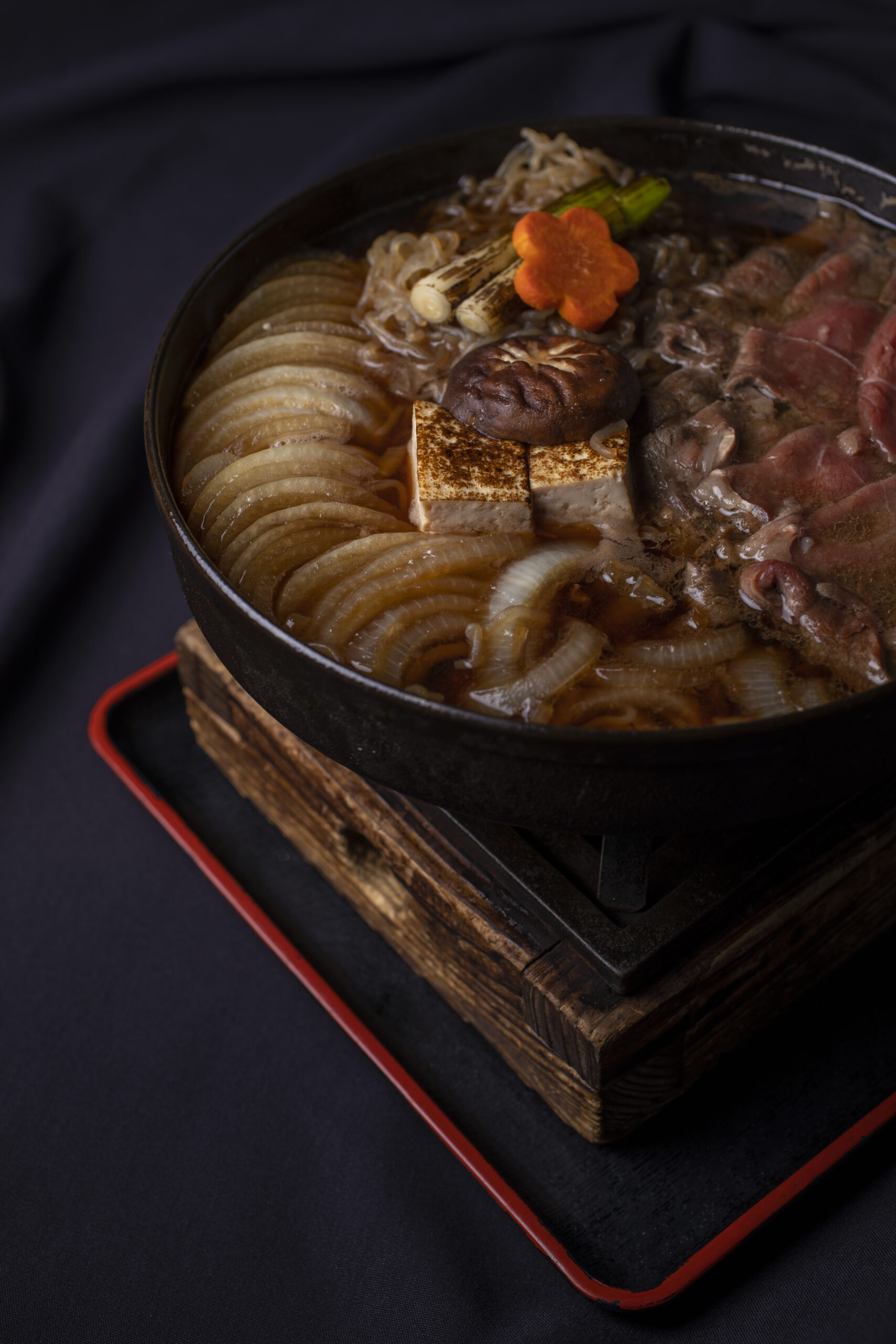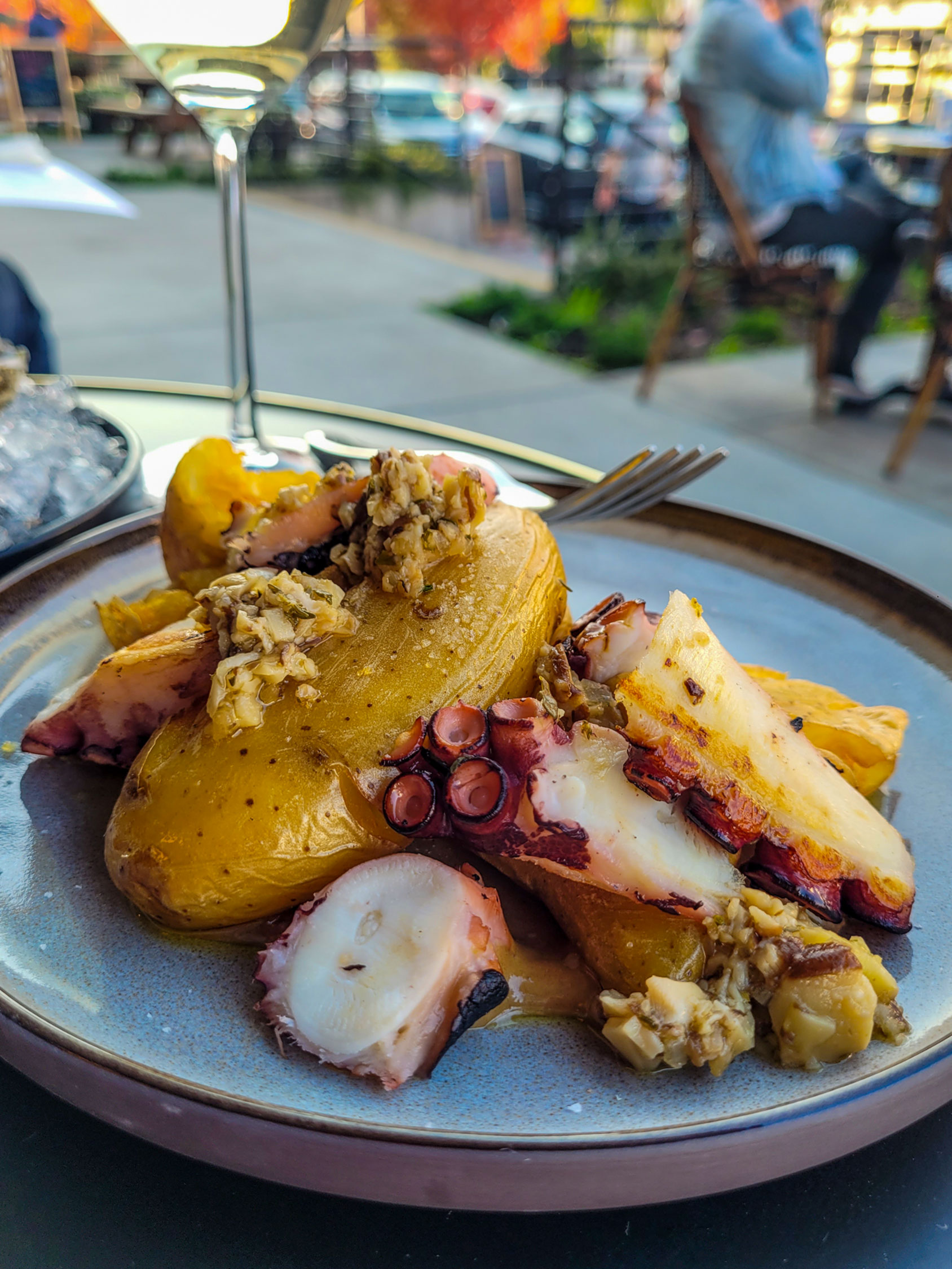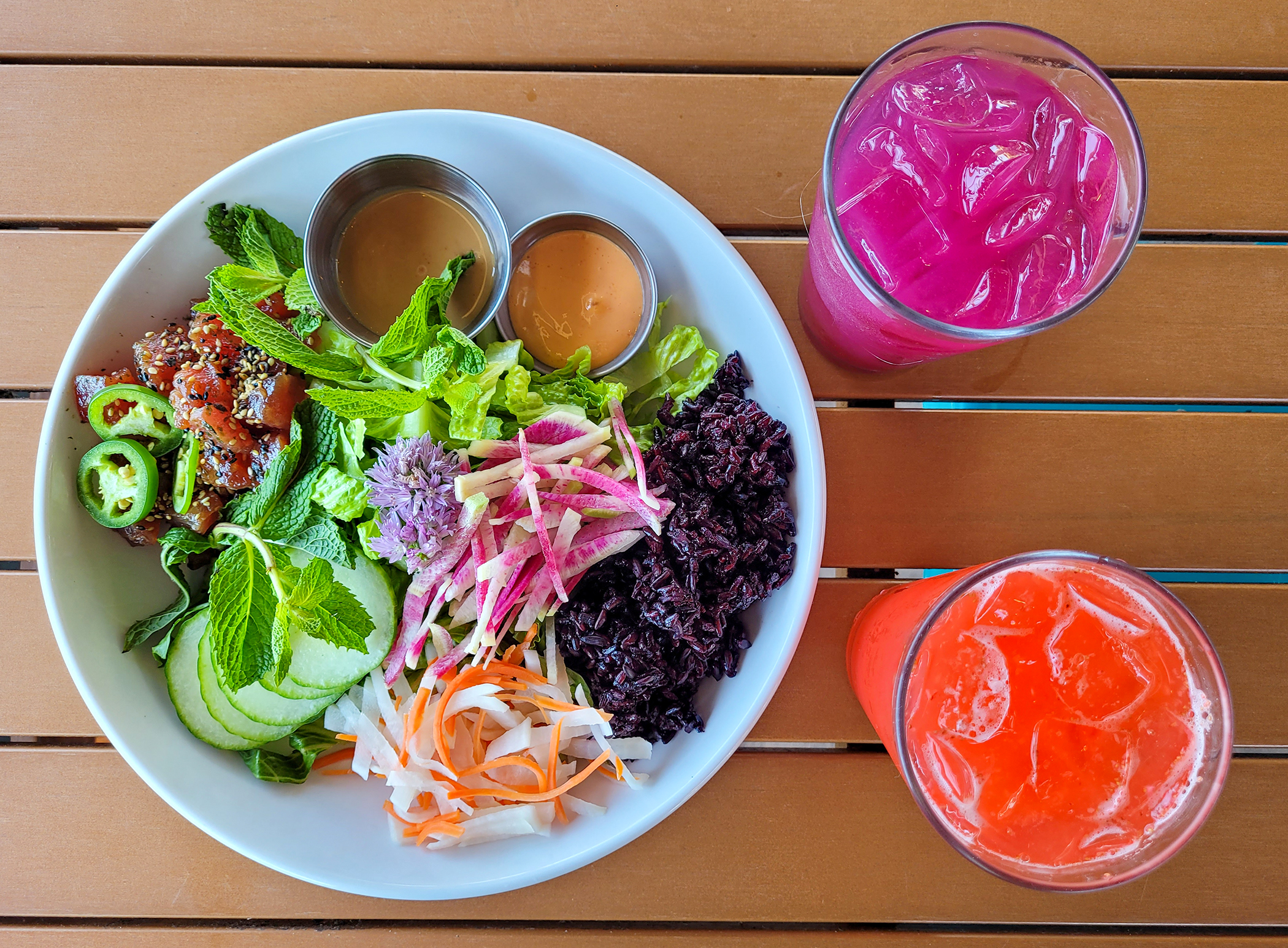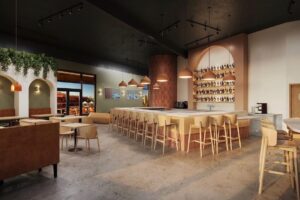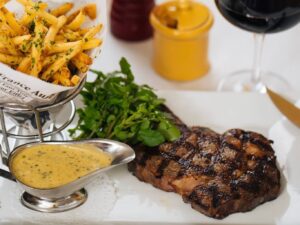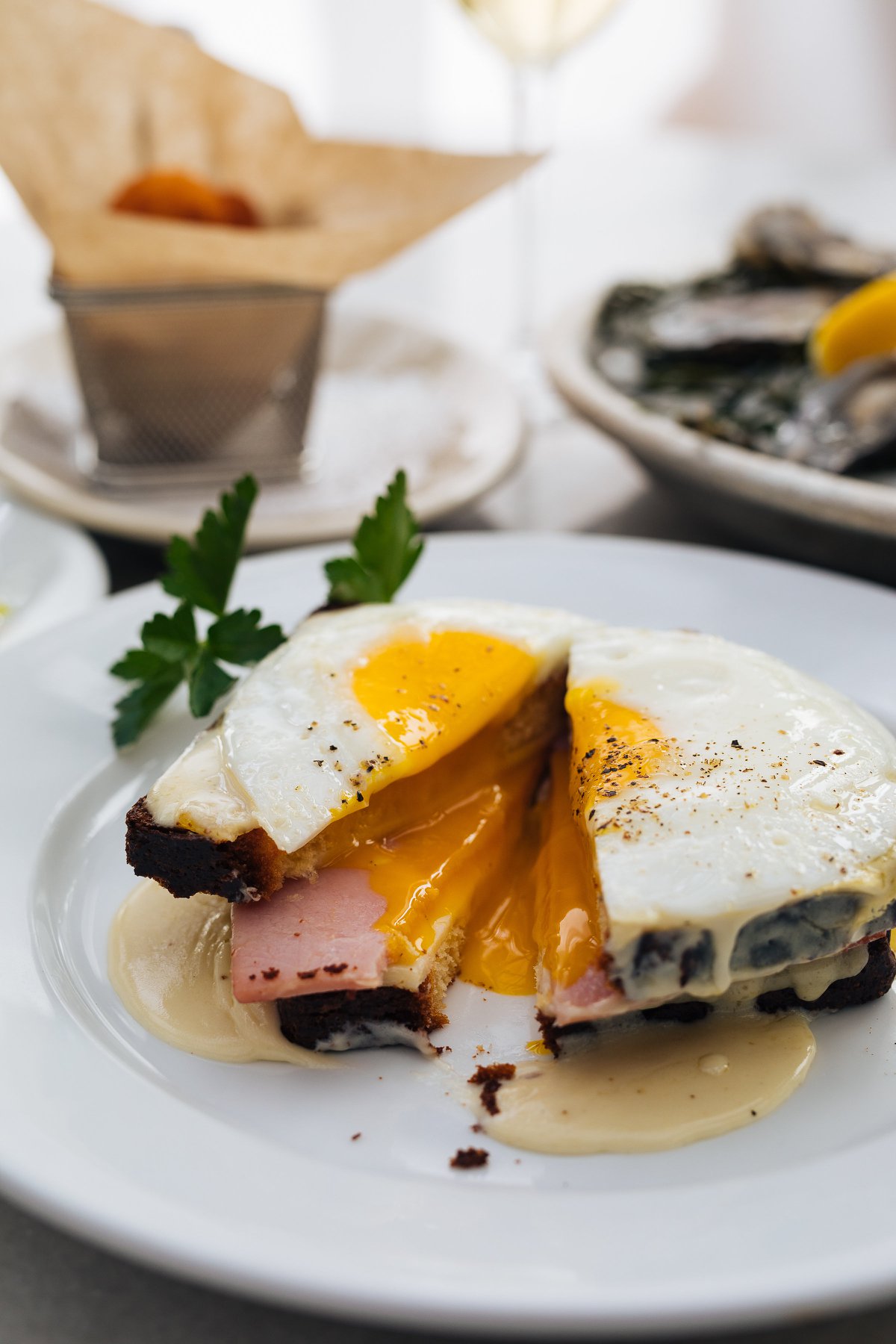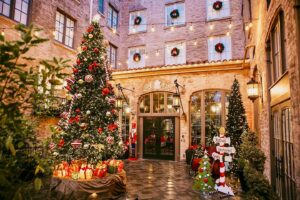Hanukkah, the eight-day Jewish Festival of Lights, begins at nightfall on Sunday, Dec. 18 this year. On each night, Jewish families gather to light another candle on the Hanukkah menorah while reciting a special blessing.
After the nightly candle lighting, it’s time for food and games — eating latkes with sour cream and applesauce, sufganiyot (jelly doughnuts) and other traditional Hanukkah foods and spinning the dreidel to collect some gelt (usually chocolate coins covered in gold foil).
Sonoma County offers several ways to celebrate Hanukkah this year, from restaurants preparing special dishes to live music and menorah lighting events.
Chanukah Celebration and Drone Gelt Drop, Sonoma-Marin Fairgrounds
This is the first time we’ve heard of a drone gelt drop, and we’re intrigued. If you want to check it out, head to the Sonoma-Marin Fairgrounds on the first night of Hanukkah.
This action-packed event, organized by the Chabad Jewish Center of Petaluma, also includes a 9-foot menorah, a fire juggling act, a “dancing dreidel” (plus the world’s largest dreidel), giant Hanukkah decorations, live DJ Hanukkah music, latkes, jelly doughnuts and chocolate gelt and face painting. 4:30-6 p.m. Dec. 18. Free with RSVP at jewishpetaluma.com.
Sonoma-Marin Fairgrounds, 75 Fairgrounds Drive, Petaluma, 707-559-8585.
Menorah Lighting and Appetizers, Kancha
Congregation Shomrei Torah and Kancha restaurant, owned by Lorraine and Angel Cayllahua, will host a Hanukkah candle lighting ceremony at the downtown Santa Rosa eatery with passed appetizers — latkes, mushroom empanadas, arthicoke ceviche — and live music. Additional food and drinks will be available for purchase. 5-7 p.m. Monday, Dec. 19.
643 Fourth St., Santa Rosa, kanchasr.com
“Light Up the Night” Chanukah Celebration, Montgomery Village
This event, organized by the Joseph Weingarten Chabad Jewish Center of Sonoma County, will feature a menorah lighting ceremony, live music, latkes and other goodies. 4 p.m. Sunday, Dec. 18. 911 Village Court, Santa Rosa.
Adult Chanukah Sushi Party, Santa Rosa
Also organized by the Joseph Weingarten Chabad Jewish Center of Sonoma County, this event will include a menorah lighting ceremony, an open bar and music. $50 per person. Register at jewishsonoma.com. 2461 Summerfield Road, Santa Rosa.
Kosher Chinese Chanukah Party and Game Night, Petaluma
If you prefer lo mein to latkes, celebrate the last night of Hanukkah (Dec. 25) with Chinese food and board games at the Chabad Jewish Center in Petaluma.
In the U.S., Jews have been eating Chinese-American food on Christmas Day for over a century. According to Rabbi Joshua Eli Plaut of the Metropolitan Synagogue of New York and author of “A Kosher Christmas: ‘Tis the Season to be Jewish,” the tradition started at the end of the 19th century on the Lower East Side of Manhattan, where Jewish and Chinese immigrants lived close to one another. “Jews would go out for Chinese food on Sundays, when they felt left out of church lunch,” said Rabbi Plaut in an interview with Vox, and added that, in terms of kosher law, Chinese food was safer to eat than, for example, Italian, which frequently mixes meat and dairy.
At the Chabad Jewish Center’s celebration, the Chinese dinner ($18) will be kosher, and will be followed by game night — bring your own menorah, favorite board game and lucky dreidel. RSVP here.
Chabad Jewish Center, 205 Keller St., Petaluma
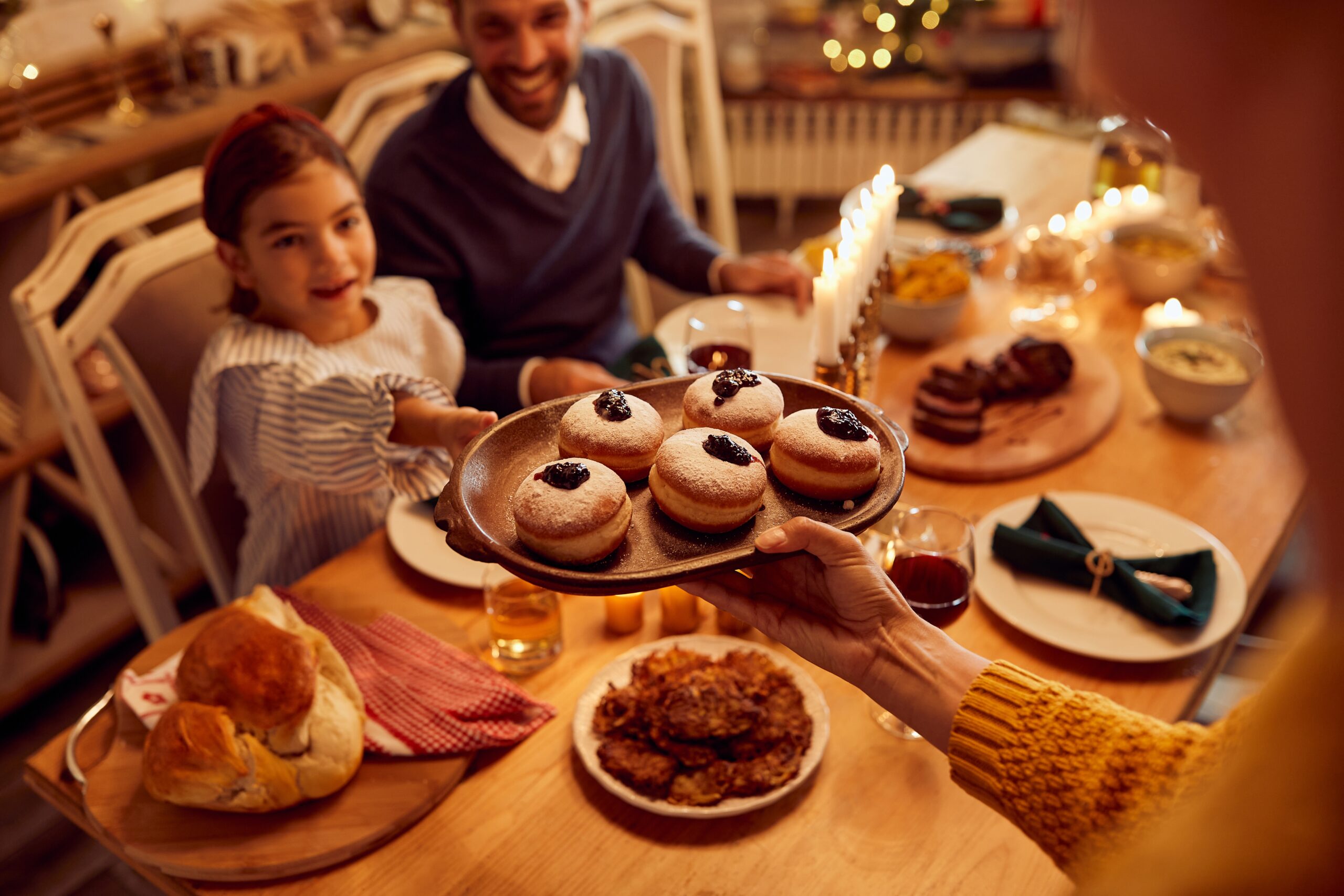
Hanukkah dinners and sweet treats
Hanukkah Dinner (dining in and take-and-bake), La Bodega Kitchen
La Bodega Kitchen, owned by Meekk Shelef (who is from Haifa, Israel) and Bryan Cooper, will serve an a la carte vegan menu during the week of Hanukkah (Dec. 18 – Dec. 23, and Dec. 26), which will include latkes, small plates like Moroccan Saffron “Chicken” in puff pastry, and entrees like Mushroom, “Lamb” and “Beef” Brochettes with wild porcini and shiitake mushrooms, Black Sheep “lamb,” Impossible beef, green cardamom, and majadara (French puy lentils and basmati rice with caramelized onions).
In addition to the traditional sufganiyot, there will be poached pears in spiced wine and honey date cake for dessert.
The restaurant also will serve a family-style, candlelit community dinner from the Hanukkah menu Sunday, Dec. 18 at 6:15 p.m. The price for the dinner is $55. Space is limited and reservations are required.
Items from the Bodega Kitchen Hanukkah menu can be ordered as takeout for reheating at home. Reserve or order ahead by calling 707-827-1832 or emailing info@sonomawineship.com. The restaurant will be closed for dining in on Dec. 24 and Dec. 25, but the Hanukkah menu will be available to preorder for take-and-bake at home during those dates.
2295 Gravenstein Highway S., Sebastopol, 707-827-1832, sonomawineshop.com
Hanukkah Dinner (to-go), Grossman’s Noshery and Bar
This New York-style deli, restaurant and bar owned by Mark and Terri Stark is selling a Hanukkah dinner for two to-go ($95), available to order through Dec. 14. Pickup is 8 a.m. to 8 p.m. Dec. 18-24.
The dinner includes sweet and sour brisket with horseradish cream, parsley potatoes, pomegranate molasses roasted carrots, spinach salad with dates, feta and pistachio, challah and sufganiyot. A la carte items can be added for an extra charge, including potato leek latkes (three per order) with applesauce and sour cream ($12) and sufganiyot ($3.50). Order online at grossmanssr.com.
New this year at Grossman’s is “Bubbie’s Tote,” which can be purchased at the restaurant and stuffed with all kinds of treats from the bakery and retail section. It makes a nice holiday gift.
308 ½ Wilson St. at the Hotel La Rose, Santa Rosa. 707-595-7707, grossmanssr.com.
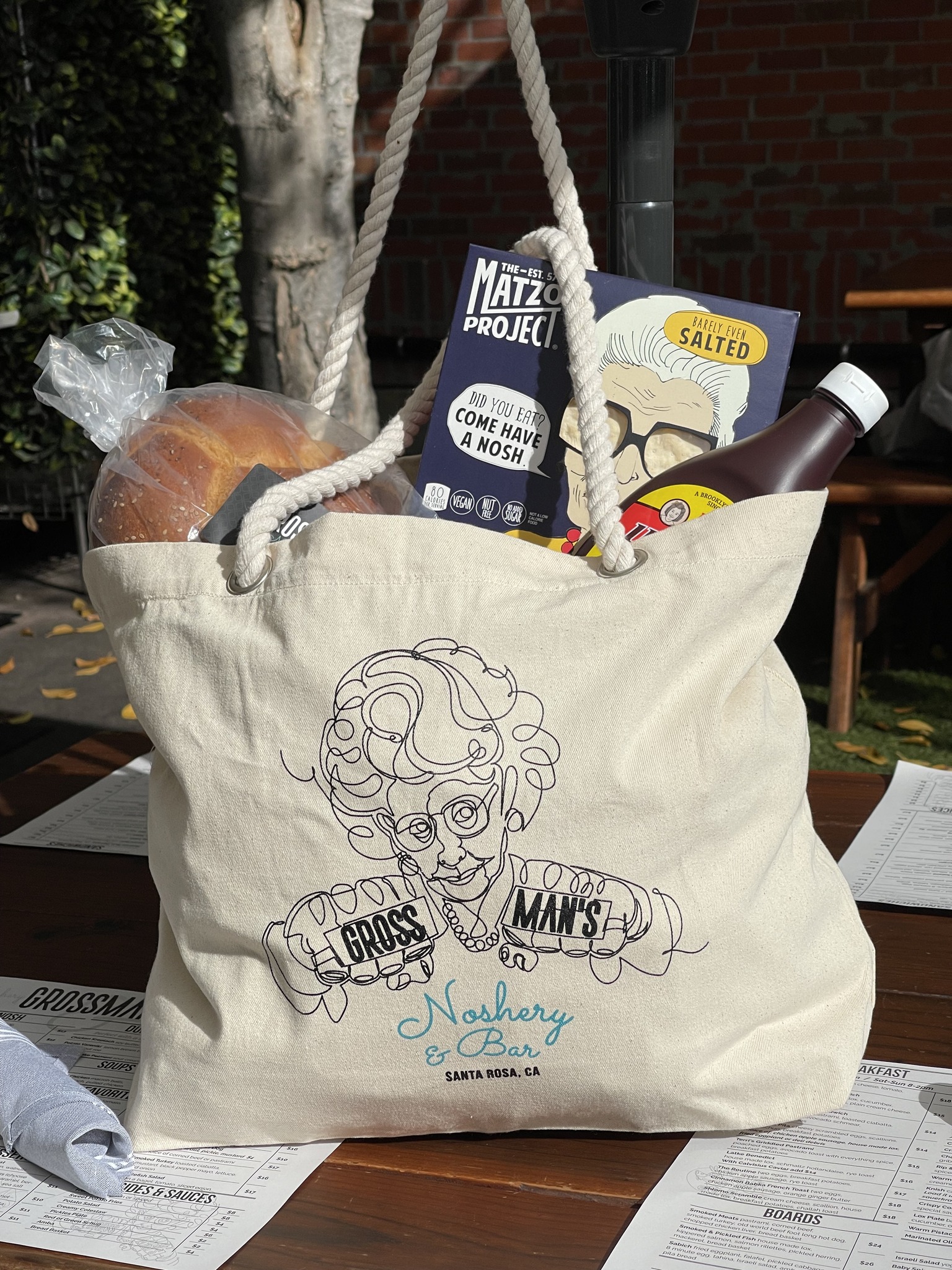
Hanukkah Dinner (pickup), Penngrove Market
This friendly neighborhood grocery store is selling a Hanukkah dinner for four ($95), to pick up from 11 a.m. to 6 p.m. on Saturday, Dec. 17.
The dinner, which will be cooked and ready to heat, includes braised beef brisket and comes with organic potato and vegetable latkes, matzoh ball soup and an organic mixed green salad with a pomegranate vinaigrette. The Hanukkah dinner tends to sell out fast, so reserve yours soon by calling 707-753-4974.
10070 Main St., Penngrove, 707-753-4974, penngrovemarket.com
Latkes (pickup), Zoftig Eatery
This Santa Rosa restaurant got its name from the word zaftig, which means juicy in traditional Yiddish, and at Zoftig Eatery means flavorful and generously portioned dishes. This Hanukkah, Zoftig owners and chefs Matt and Sonjia Spector will serve latkes, available to order online (from Thursday, Dec. 15) and pick up at the restaurant.
Order a half dozen ($16) or a dozen ($30) potato latkes with applesauce and sour cream to pick up throughout Hanukkah during opening hours: 8 a.m. to 6 p.m. Monday, Dec. 19 to Friday, Dec. 23. Allow 24 hours for pickup.
57 Montgomery Drive, Santa Rosa, 707-521-9554, zoftigeatery.com

Challah, Rugelach and Babka, Ethel’s Bagels
Chef Nicolas Abrams launched Ethel’s Bagels in 2020 in honor of his grandparents, Lew and Ethel, and runs it with the help of his wife, Clare, his son, Oliver, 19, and his daughter, Freya, 13. The bakery is located in Petaluma and will soon get a permanent outpost at 1000 Clegg Court (the former April Pantry space) for a bagel shop and delicatessen. In the meantime, orders can be placed online for delivery or pickup at local farmers markets.
For Hanukkah, Ethel’s Bagels will have braided challah, apricot/walnut rugelach and chocolate rugelach, chocolate babka with chocolate streusel and pumpkin spice babka with a toasted walnut streusel. All of these items (alongside weekly offerings of sourdough bagels, schmears and more) will be available for delivery throughout Sonoma County on Friday, Dec. 16 and 23. The bakery also will sell latkes, served hot, at Marin Country Mart in Larkspur and the Kensington farmers market.
Doughnuts with Hanukkah Sprinkles, Harvey’s Gourmet Donuts
The Cohen family have run this doughnut shop for 13 years. Husband and wife Harvey and Georgia take turns operating the vintage doughnut machine to make mini doughnuts, sold by the dozen in a cone. Daughters Maryn and Zorelle also work in the shop. While their popular Hanukkah doughnut decorating kits won’t be available this year due to supply chain issues, they will have raspberry glaze doughnuts with Hanukkah sprinkles. The Cohens light the menorah in their doughnut shop during the Jewish holiday. For more information, visit harveysdonuts.com or call 707-246-5928.
Harvey’s Donut Bar, 414 First St. East, Sonoma, open Fridays 10 a.m. to 3 p.m., Saturdays 10 a.m. to 9 p.m., and Sundays 10 a.m. to 7 p.m.
Harvey’s Gourmet Donuts & Catering, 19030 Railroad Ave., Sonoma, open Fridays 5-9 p.m.
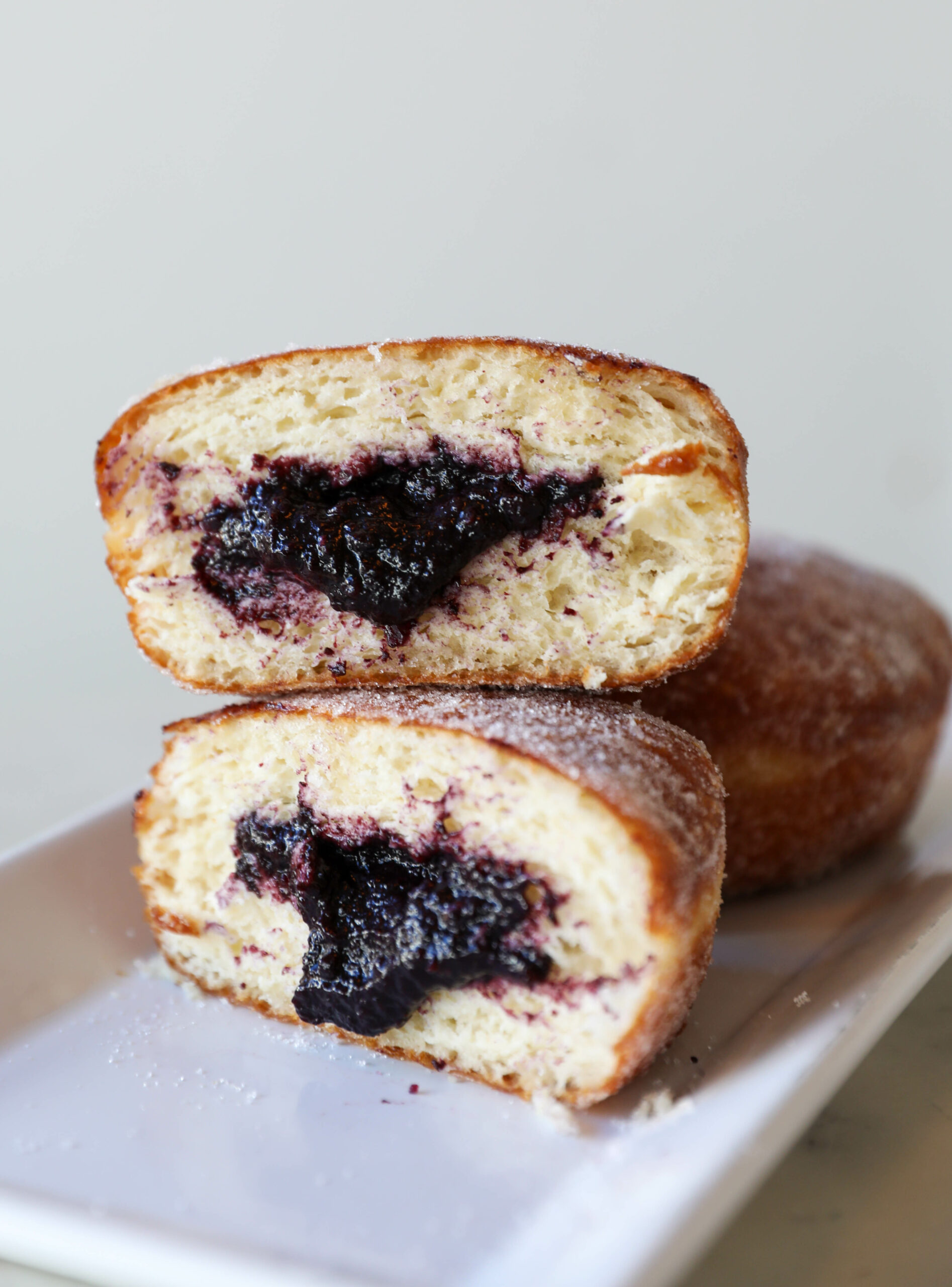
Wildberry Jam Bismark Sufganiyot, Johnny Doughnuts
Johnny Doughnuts will have a special Hanukkah gift box of 12 mini Wildberry Jam Bismark sufganiyot ($50) available at its four locations, including Santa Rosa. Online orders must be placed at least two days in advance.
1200 Fourth St., Santa Rosa, 415-521-5650, johnnydoughnuts.com
Lemon Cream and Dulce de Leche Sufganiyot, Marla Bakery
This popular Windsor bakery, owned by Amy Brown and Joe Wolf, recently set up shop inside Santa Rosa’s Miracle Plum market and wine bar. For Hanukkah, they will make Meyer lemon cream- and dulce de leche-filled sufganiyot, available to preorder on the bakery’s website and pick up at Miracle Plum or the bakery in Windsor Dec. 18, 23 and 24. The sufganiyot come in boxes of four ($15). The boxes, in gold and blue, make for nice holiday gifts or a special treat for yourself.
399 Business Park Court, Suite 404, Windsor; 208 Davis St. (inside Miracle Plum), Santa Rosa. marlabakery.com
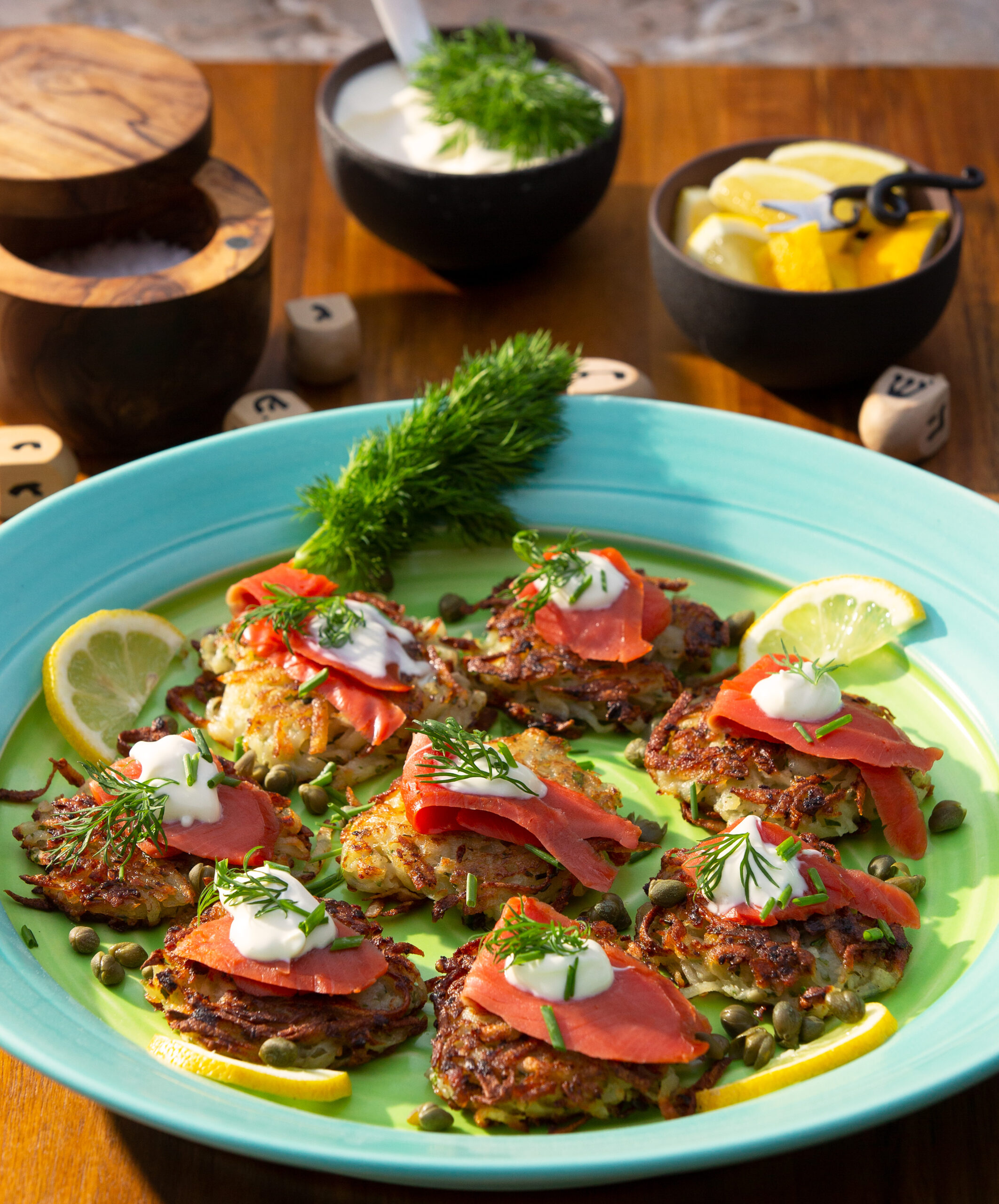
Make latkes like a pro
Bruce Riezenman, a longtime Sonoma County chef who co-owns Park Avenue Catering with Ari Weiswasser of the Glen Ellen Star, has spent a lifetime perfecting the delicious potato pancakes he used to eat as a child with his parents and grandparents during Hanukkah. He likes to top his latkes with slices of his Citrus-Cured Salmon, a dollop of crème fraîche, a sprinkle of herbs and a handful of briny capers. — by Diane Peterson for The Press Democrat
Potato Latkes
Makes 40 hors d’oeuvres-size servings
Ingredients
2 pounds large russet potatoes, peeled and kept cold in the fridge
1 medium onion, peeled, grated and quickly pulsed in a food processor
2 tablespoons chives, sliced thin
2 tablespoons Italian parsley, chopped
1 large egg
¼ cup matzoh meal
Salt and freshly ground black pepper to taste
Instructions
Combine the grated/pulsed onion and the egg in a mixing bowl.
Using the large side of a box grater, grate the potatoes into a strainer that is suspended over a bowl. Once the potatoes are grated, squeeze out as much of the excess potato liquid as you can into a separate bowl and then mix thoroughly with the onion and egg mixture.
Let the liquid from the potatoes settle for 5 minutes and then carefully pour off the water that has collected, being careful to save the potato starch that has settled on the bottom. Scrape the starch into the latke mix; add the matzo meal, chives and parsley along with some salt and pepper and mix thoroughly. Cover the mix with plastic wrap and return to the refrigerator for 20 minutes to allow the matzoh meal to absorb some of the liquid.
Place a cast-iron skillet (or sauté pan) over medium heat with enough canola oil to generously coat/float on the bottom of the pan. When the oil is hot but not smoking, stir the latke mix (to make sure the liquids are evenly distributed) and spoon a heaping tablespoon of the mix into the pan. Press down to flatten the mix and repeat until you have filled the pan with as many hors d’oeuvre-sized latkes as will fit. Cook over medium heat until the bottoms are nicely golden brown. Flip latkes over and cook the second side the same way (approximately 4 to 5 minutes per side).
When the latkes are done, remove to a paper towel to absorb any of the excess oil and sprinkle with a touch of salt. Place on a clean baking sheet to keep warm in the oven. Repeat with the rest of the latkes.
Serve with Citrus-Cured Salmon (recipe below), sour cream or crème fraîche, chopped parsley and chives, capers and lemon.
Citrus-Cured Salmon
Making your own cured salmon is much easier than most people think and well worth the effort.
To cure the salmon:
1½ pounds wild salmon fillet, skin off, pin bones removed, single piece
½ cup light brown sugar
3 ounces (in volume) kosher salt
2 tablespoons brandy
Zest of 1 lime, very fine
Zest of ½ orange, very fine
Zest of ½ lemon, very fine
Instructions
Mix all dry ingredients together with the brandy. Place a large piece of plastic wrap on the counter and put half the salt mixture in a layer about the same size as the salmon in the middle of the plastic wrap. Place the salmon skin side down on the salt mix. Top the salmon with the rest of the mix. Wrap tightly around the salmon, leaving one side slightly open for liquid to escape. Place the salmon in a baking dish and top it with a heavy pan or other flat-bottomed object that weighs at least a pound or two.
Place in the refrigerator overnight. Turn the plastic with the fish over the next morning and put the weight back on it. Do this again every 12 hours or so for a total of 24 to 48 hours depending upon how thick the filet is.
Once the salmon is cured and relatively firm, remove it from the plastic, rinse off the salt mix and pat dry. Re-wrap in clean plastic and hold until you are ready to use.
Bruce Riezenman’s top 10 secrets to making delicious latkes
1 – Make sure to keep everything cold before making the mixture.
2 – Use a food processor to grate the onions, pulsing them into small pieces (stopping short of pureeing them).
3 – When you grate the russet potatoes, grate them into long strips.
4 – Add the chopped parsley and chives to the potato mixture at the very end, then mix until you see that they are well distributed. That lets you know that all the ingredients are integrated. Keep stirring the mixture as you make new latkes, to reintegrate the liquid into the mixture.
5 – Make the latke mixture at least 20 minutes early and refrigerate. That way the matzah meal can absorb the liquid from the onions and potatoes.
6 – Use a large tablespoon to scoop the latke mixture out, and do not press the mixture together. You want to make loose pancakes that will stay airy in the pan.
7 – As the frying continues, be aware that the latkes will brown up more quickly.
8 – Take the latkes out when they have a nice brown color on both the top and the bottom, then transfer them to a baking sheet and hold in a 350-degree oven for about 10 more minutes. That way, they will continue to cook through to the center while staying warm.
9 – If you are giving a party, you may want to fry up the latkes ahead of time, then hold at room temperature. When ready to serve, put them in a 350-degree oven for 10 minutes or so to reheat.
10 – When removing latkes from the pan, place on paper towels first to absorb the excess oil.


